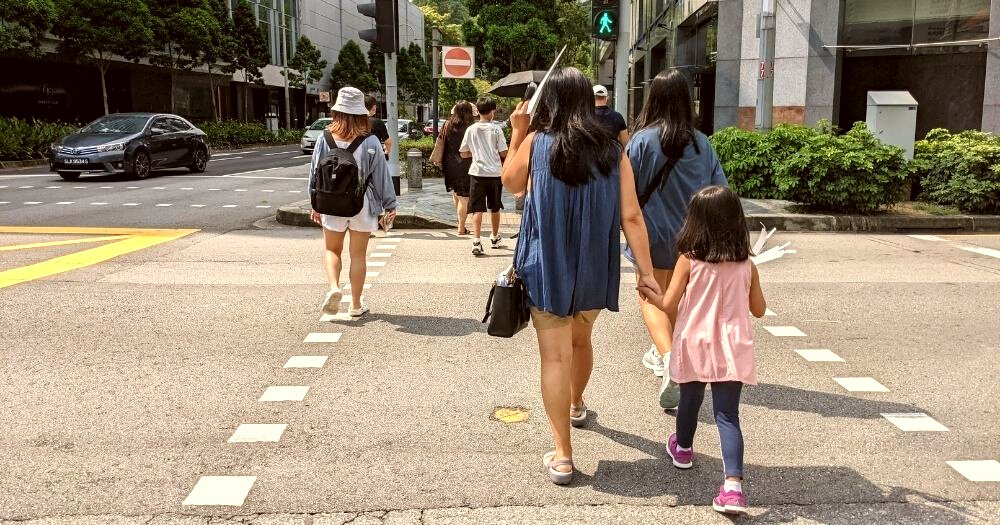Follow us on Telegram for the latest updates: https://t.me/mothershipsg
Heatwaves have been sweeping across various parts around the world, such as China, India and several European countries.
Singapore has not been spared from the effects of a warming climate.
Members of Parliament (MPs) took note of the rising temperatures as well, and posed several questions in Parliament on how Singapore is managing heat stress and the urban heat island effect at workplaces and in communities.
In response, Minister for Sustainability and the Environment Grace Fu highlighted on Aug. 2 that the heatwaves "portends the severe consequences" Singapore would face if steps are not taken to mitigate climate change.
"Singapore will not be spared the impacts of global warming," she emphasised.
Fu added that Singapore could see days with peak temperatures of 40°C by 2045.
She then laid out in detail the government's three-pronged approach to mitigating and adapting to the heat.
1. Understanding the science behind rising temperatures
The first of the government's strategies is to deepen the understanding of the science behind how rising temperatures can affect Singapore and its residents.
The Centre for Climate Research Singapore (CCRS) has been studying how global climate projections translate into localised effects here.
One focus of the studies is the El Niño phenomenon, which is typically associated with hot and dry weather in Southeast Asia.
To understand how heat affects the Singapore population, Fu shared that the government is also driving research and development to study the factors contributing to urban heat, testing different heat mitigation strategies, and assessing the effects of heat on public health.
2. Strengthening heat resilience in communities
To strengthen community resilience to climate change, the government uses a science-based approach to develop policies and guidelines.
Some segments of the population, like the elderly and outdoor workers, are more vulnerable to rising temperatures.
As such, the Ministry of Sustainability and the Environment (MSE) is working with the Ministry of Health (MOH) and the Ministry of Manpower (MOM) to study the effects of heat stress, and to ensure workplace guidelines are up to date based on the latest scientific evidence.
3. Designing effective heat mitigation strategies
Thirdly, the government currently has two broad categories of heat mitigation strategies.
Planting more greenery
The first is to promote cooling in Singapore's urban environment.
Senior Minister of State for National Development Tan Kiat How shared more about some specific measures currently in place.
The Building and Construction Authority (BCA) requires building designs to limit heat gain from the outside, which improves the thermal comfort of the building's occupants.
BCA's Green Mark Scheme also recognises buildings that implement urban heat island mitigation measures such as planting greenery.
Similarly, to optimise thermal comfort, Tan shared that Singapore's HDBs face the north-south direction to reduce heat gain. The layouts of new estates are also designed to "harness existing wind corridors and optimise wind flow".
A pilot to use cool paint, which reduces ambient temperatures by up to 2°C, is also being conducted in existing HDB towns.
Additionally, more greenery is being planted in residential and industrial estates, and on the tops of multi-storey carparks in the form of urban farms and community gardens.
Tan cited studies which show that intensified tree planting in Singapore can reduce midday temperatures in the area by up to 0.9°C.
Reducing individual energy consumption
The second category, which Fu elaborated on, are measures used to reduce heat generated from human activities such as from homes, roads and industries,
Examples of such measures are efforts to electrify the local vehicle population, and to increase the energy efficiency of industrial, commercial and residential buildings.
At the individual level, the government has also been encouraging the use and purchase of more energy efficient appliances, through the introduction of the Mandatory Energy Labelling Scheme.
When individuals reduce their energy consumption, the energy generated by power stations will also be reduced, therefore reducing both the production of heat and carbon emissions.
Fu concluded:
"Although Singapore has so far not faced heat crisis on the same scale as other countries, it will not be possible to avoid the rise in temperatures due to global warming. We must continue to engage and co-create solutions with the community to enhance our resilience to climate change."
Related stories
Top photo by Kow Zi Shan
If you like what you read, follow us on Facebook, Instagram, Twitter and Telegram to get the latest updates.
